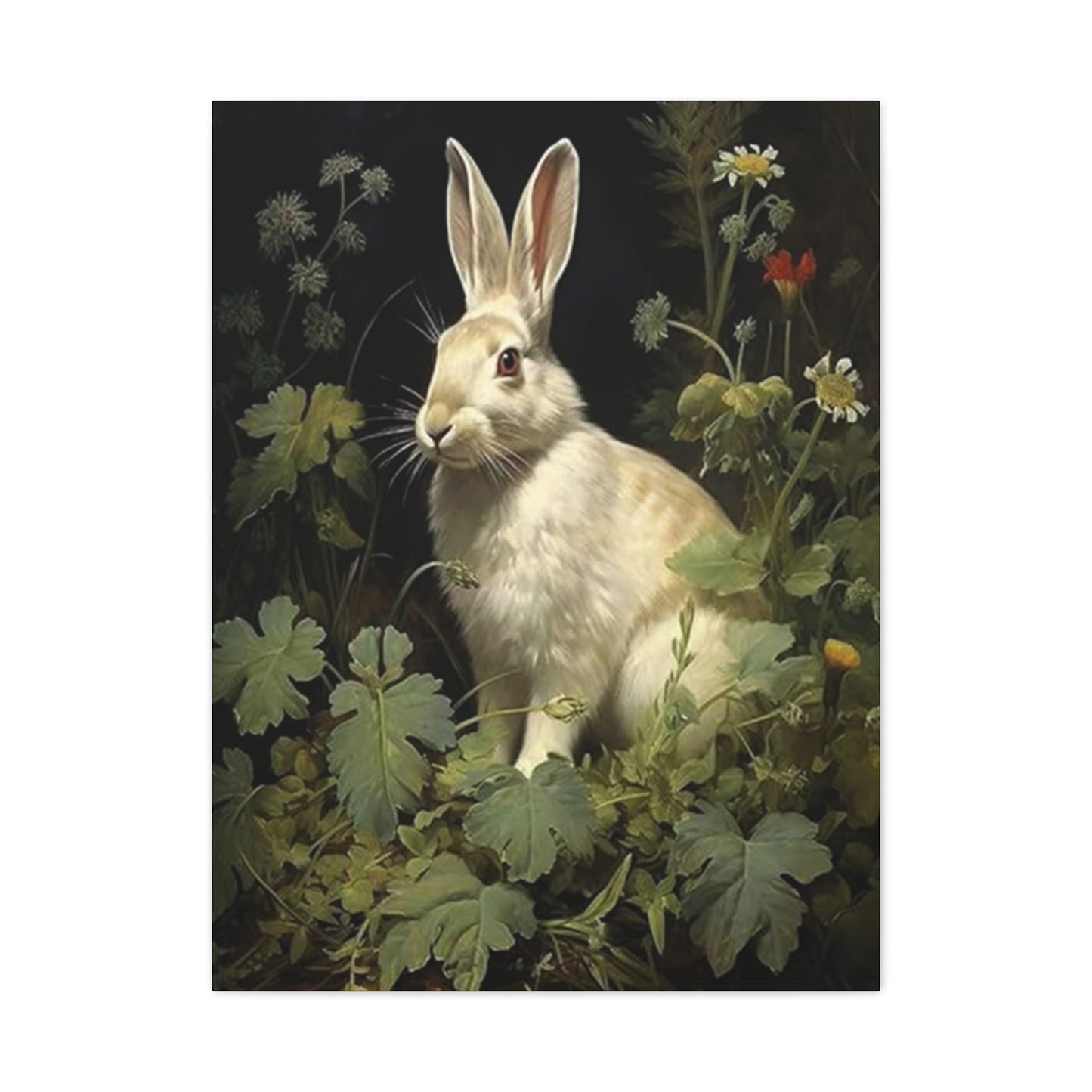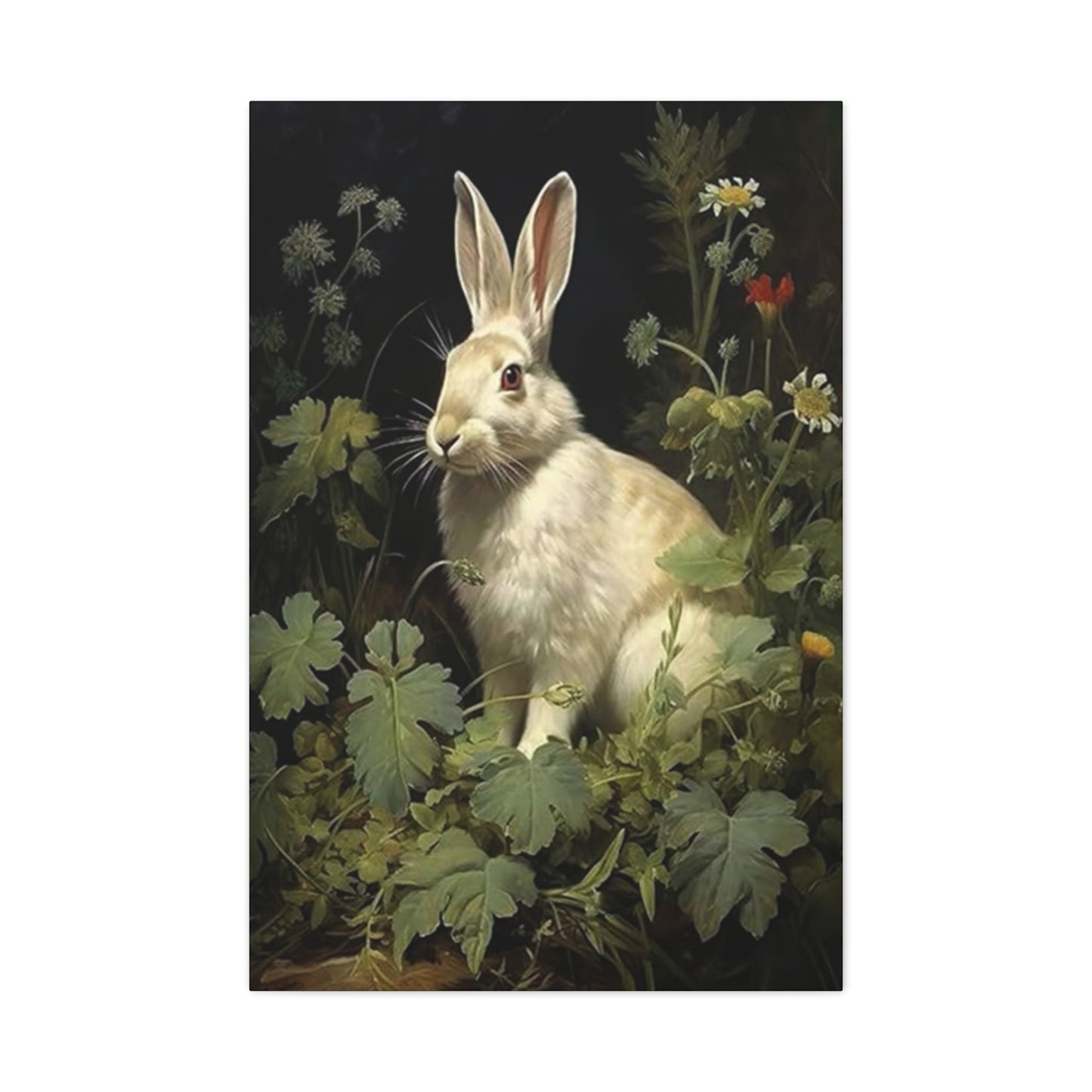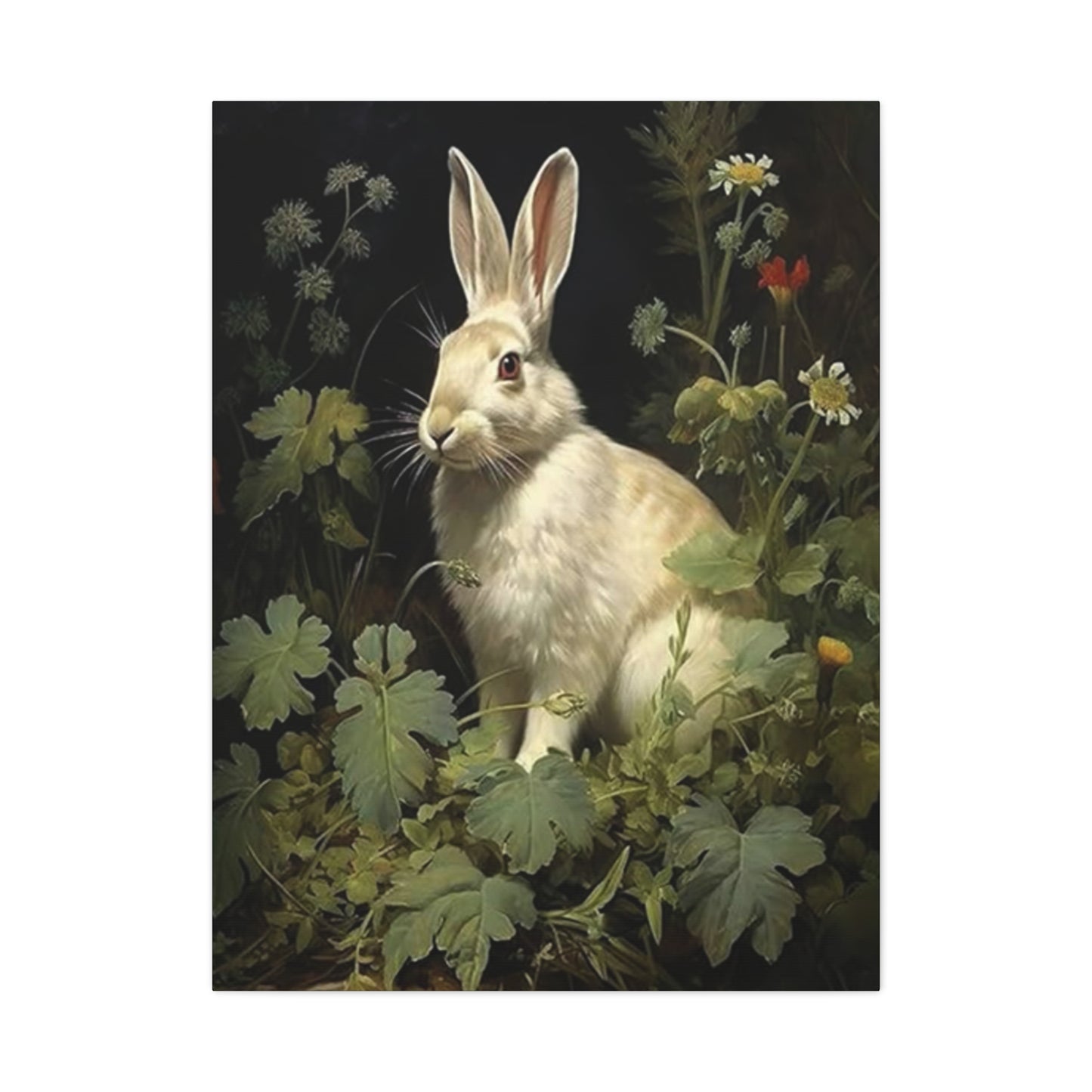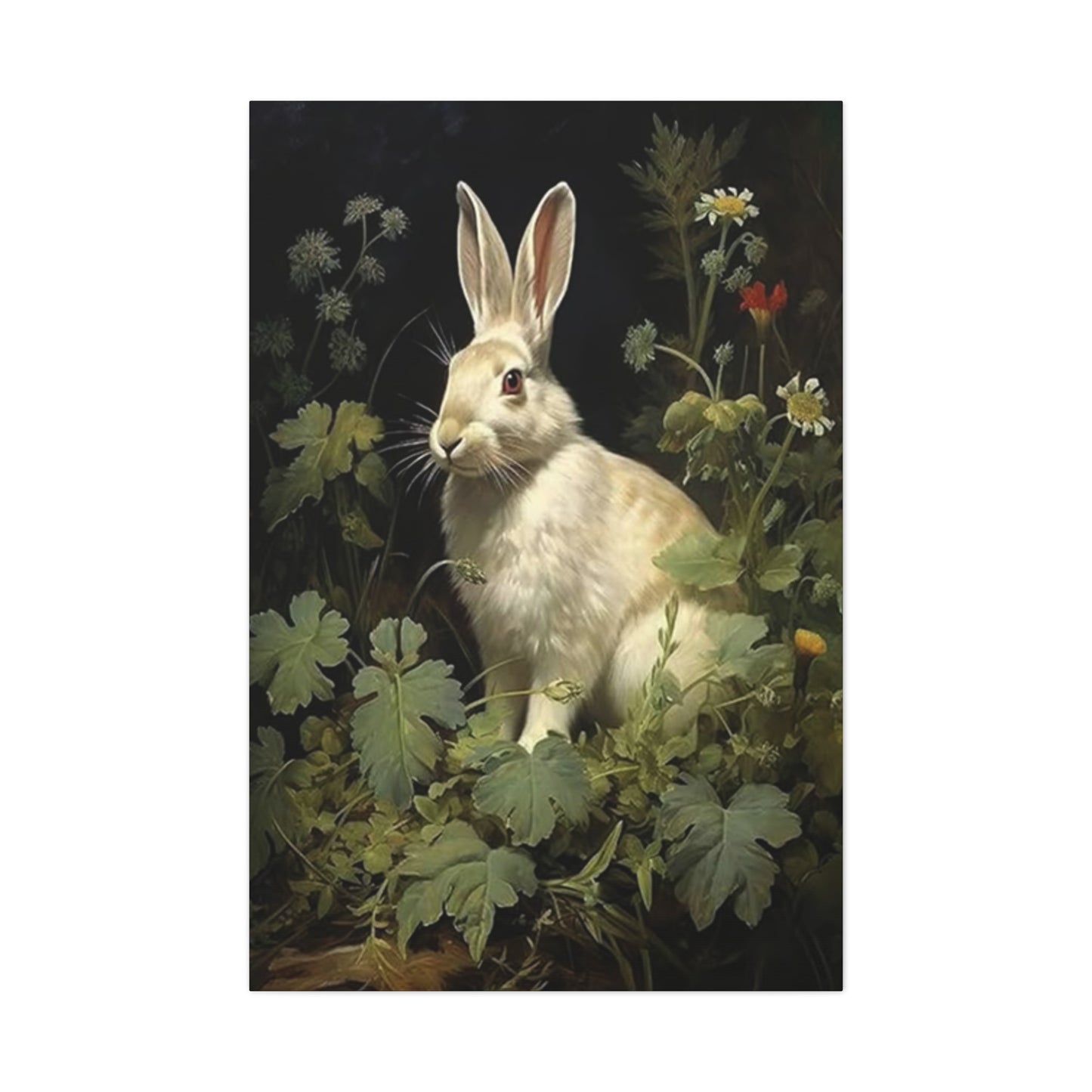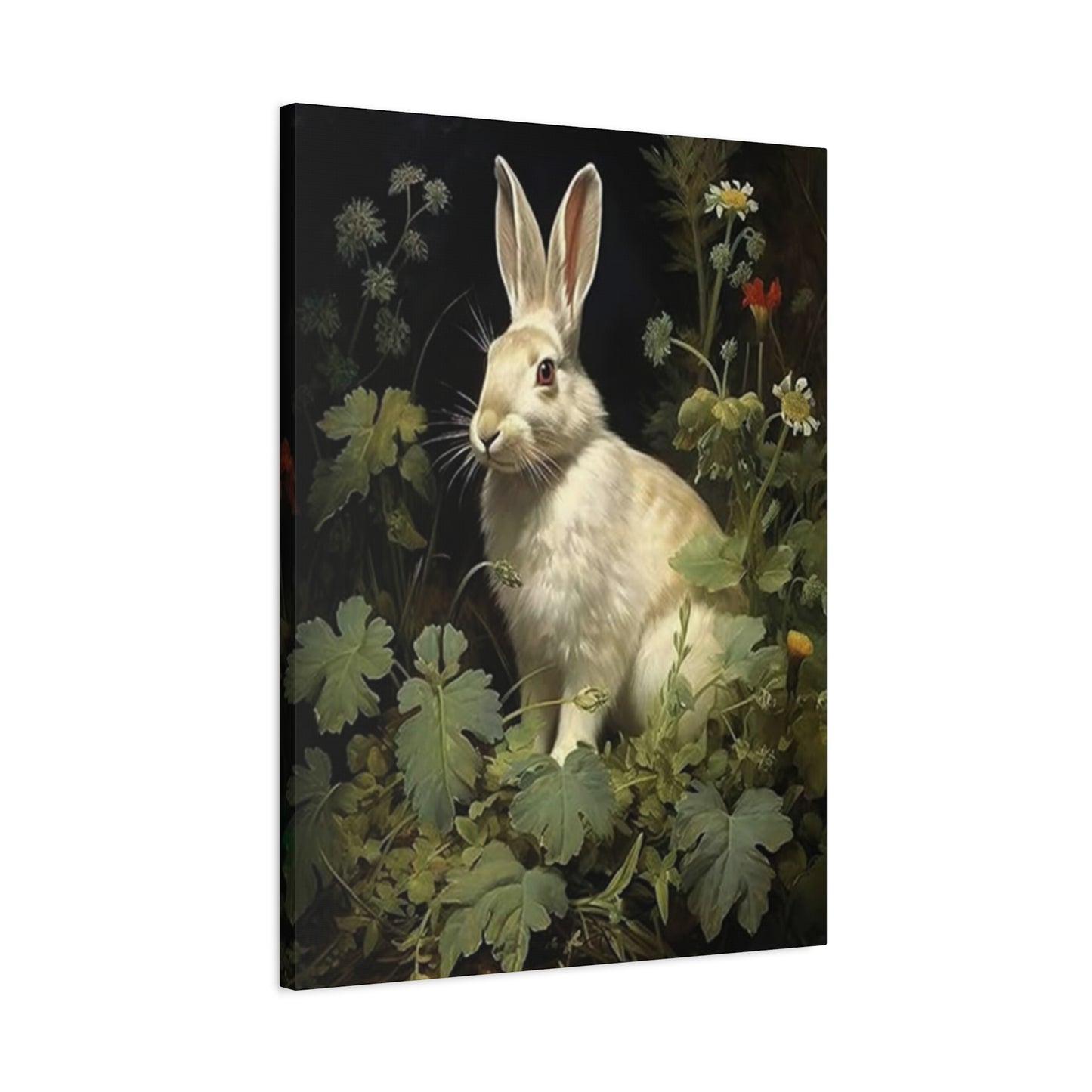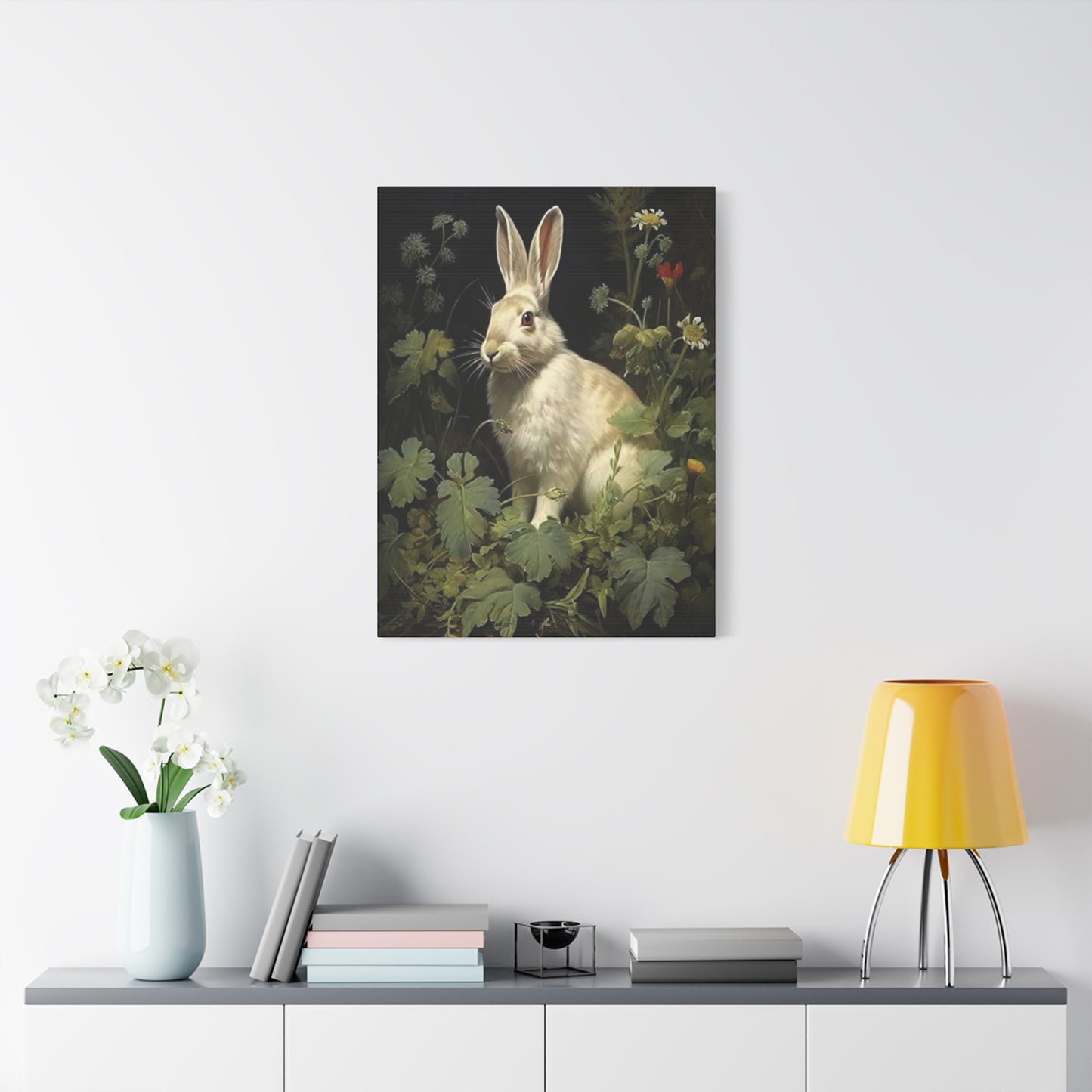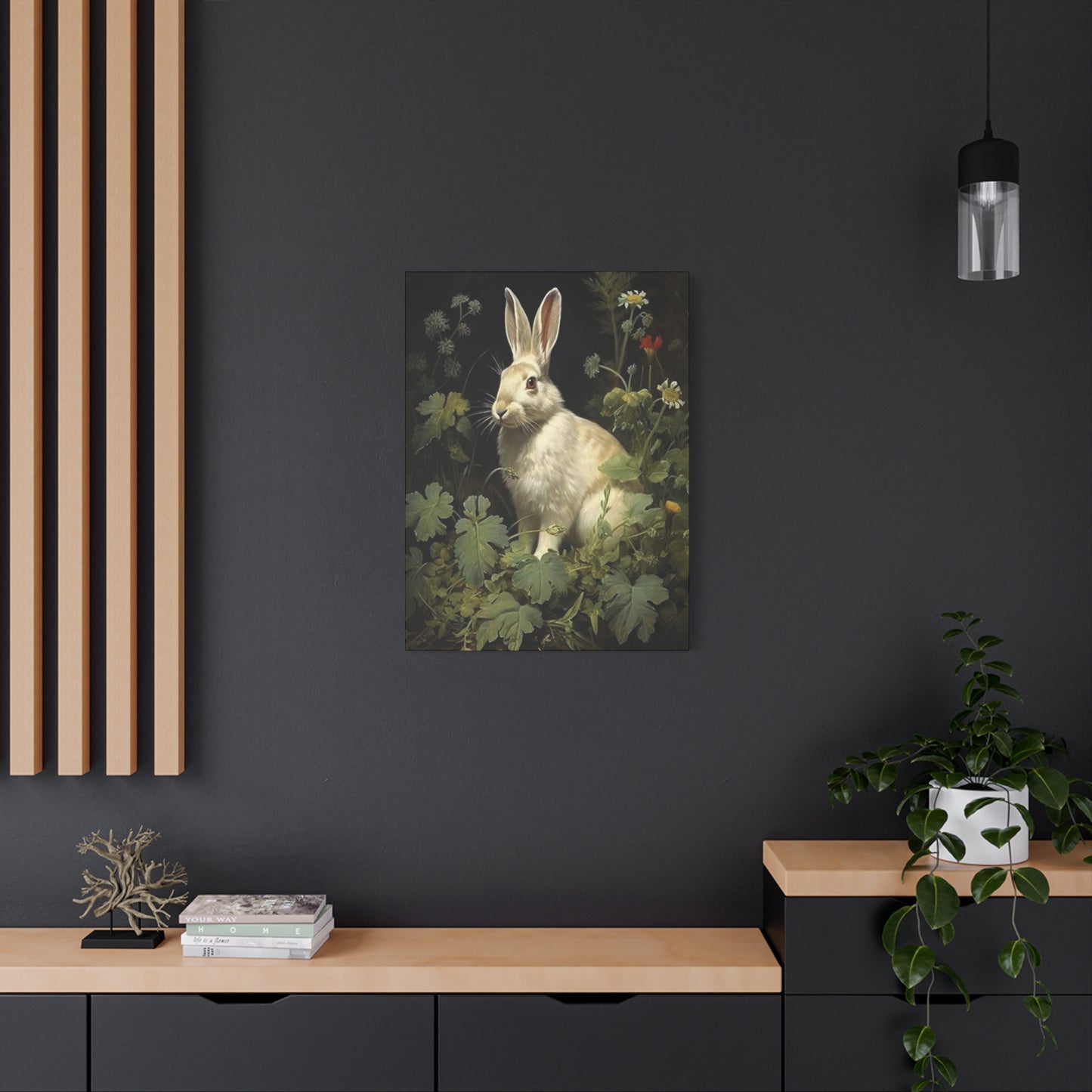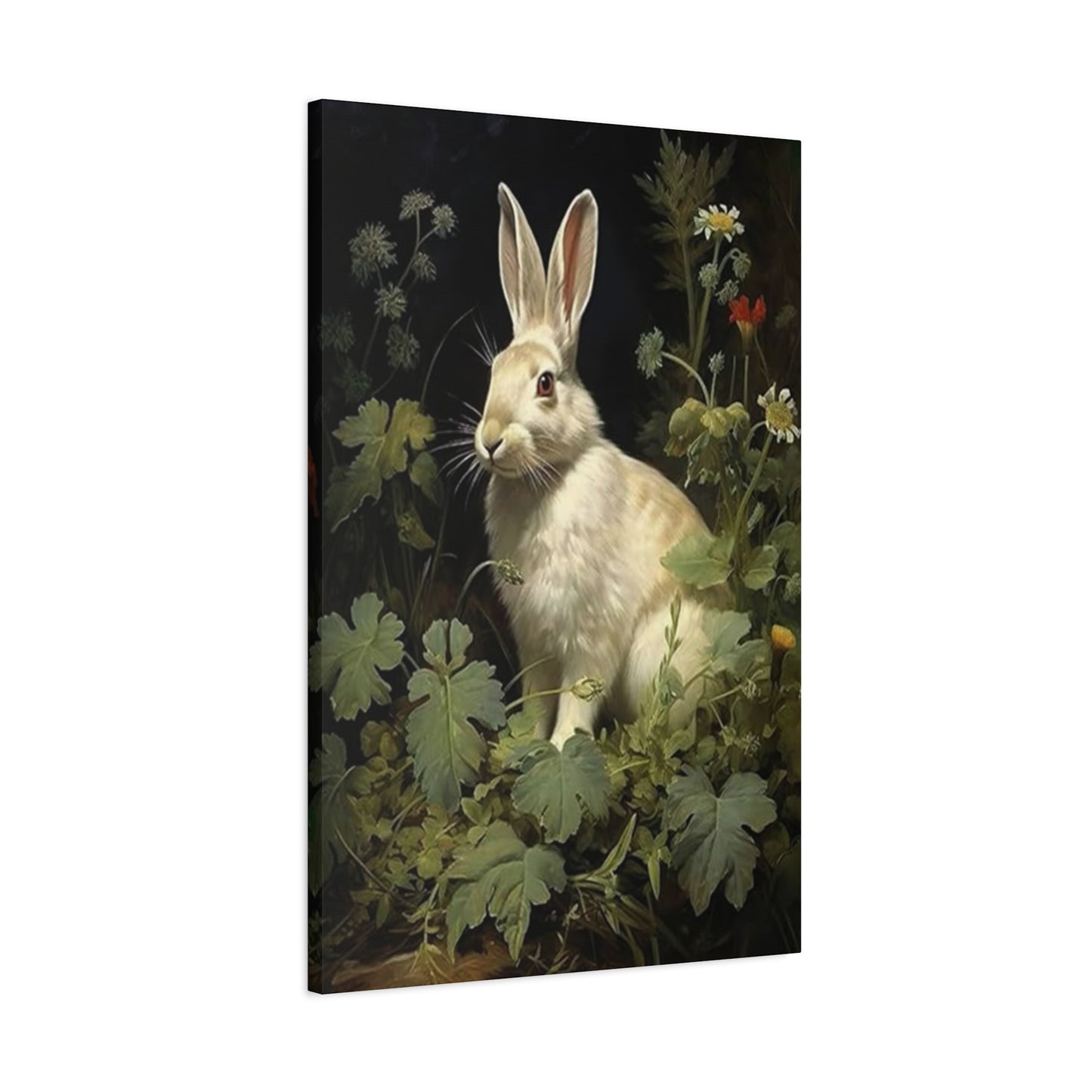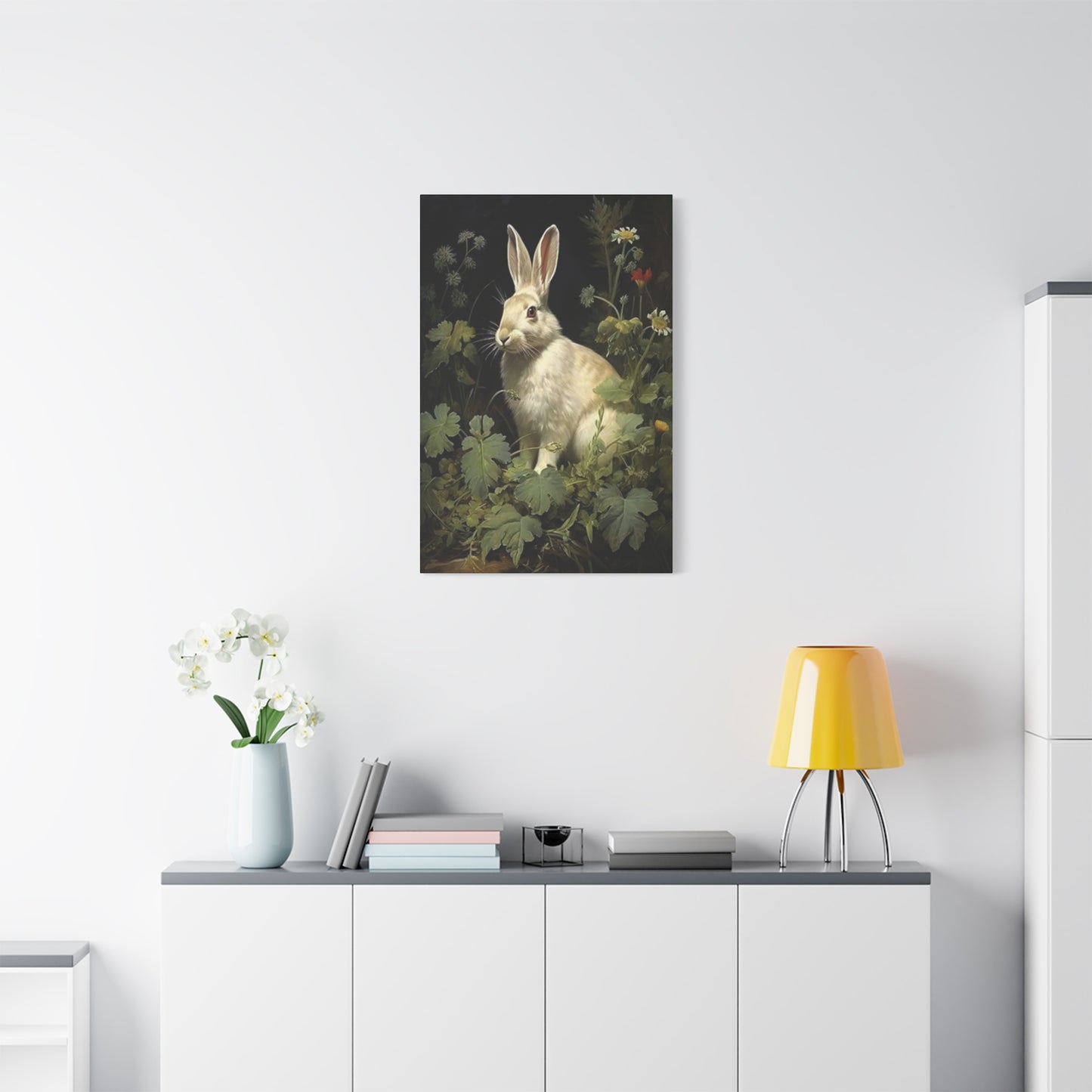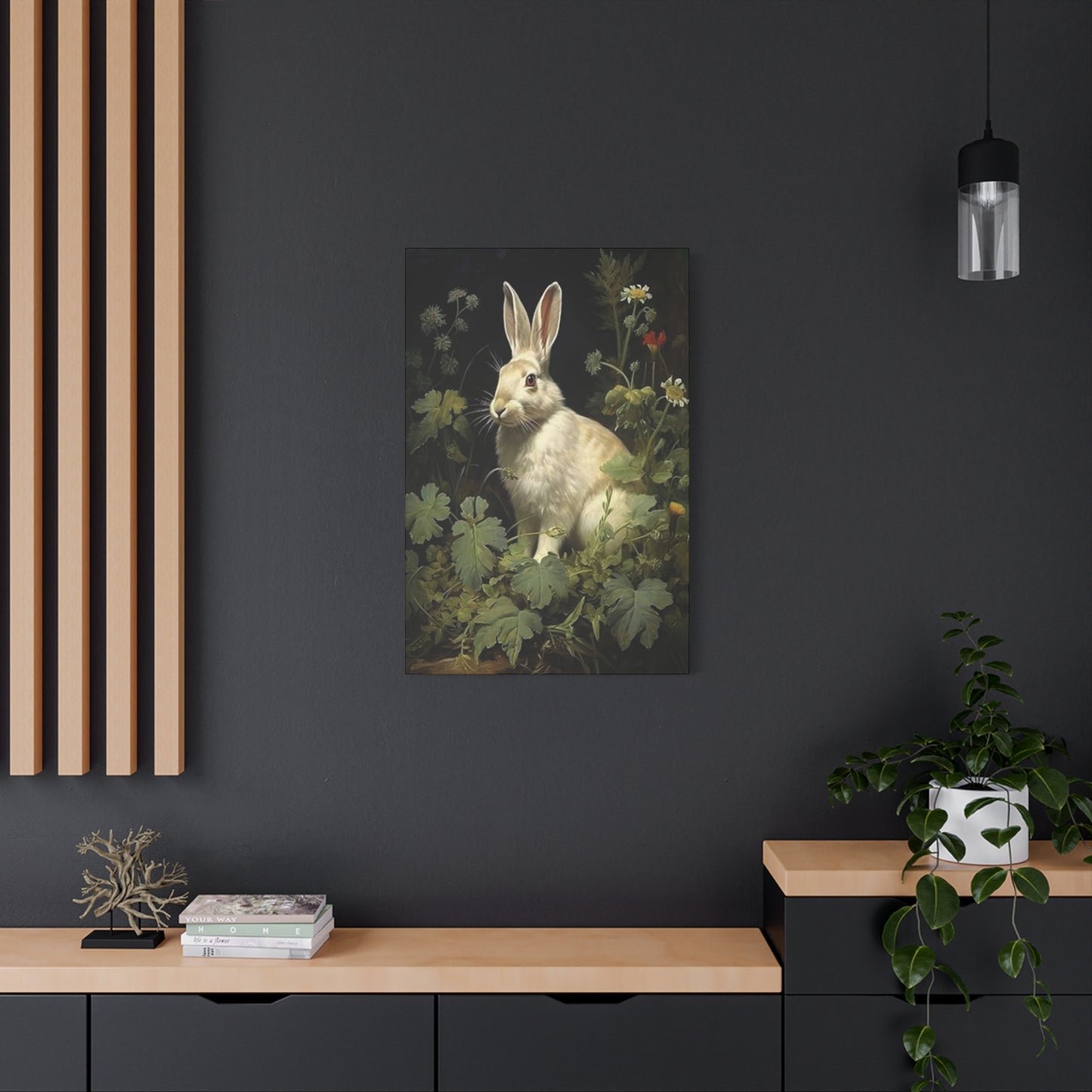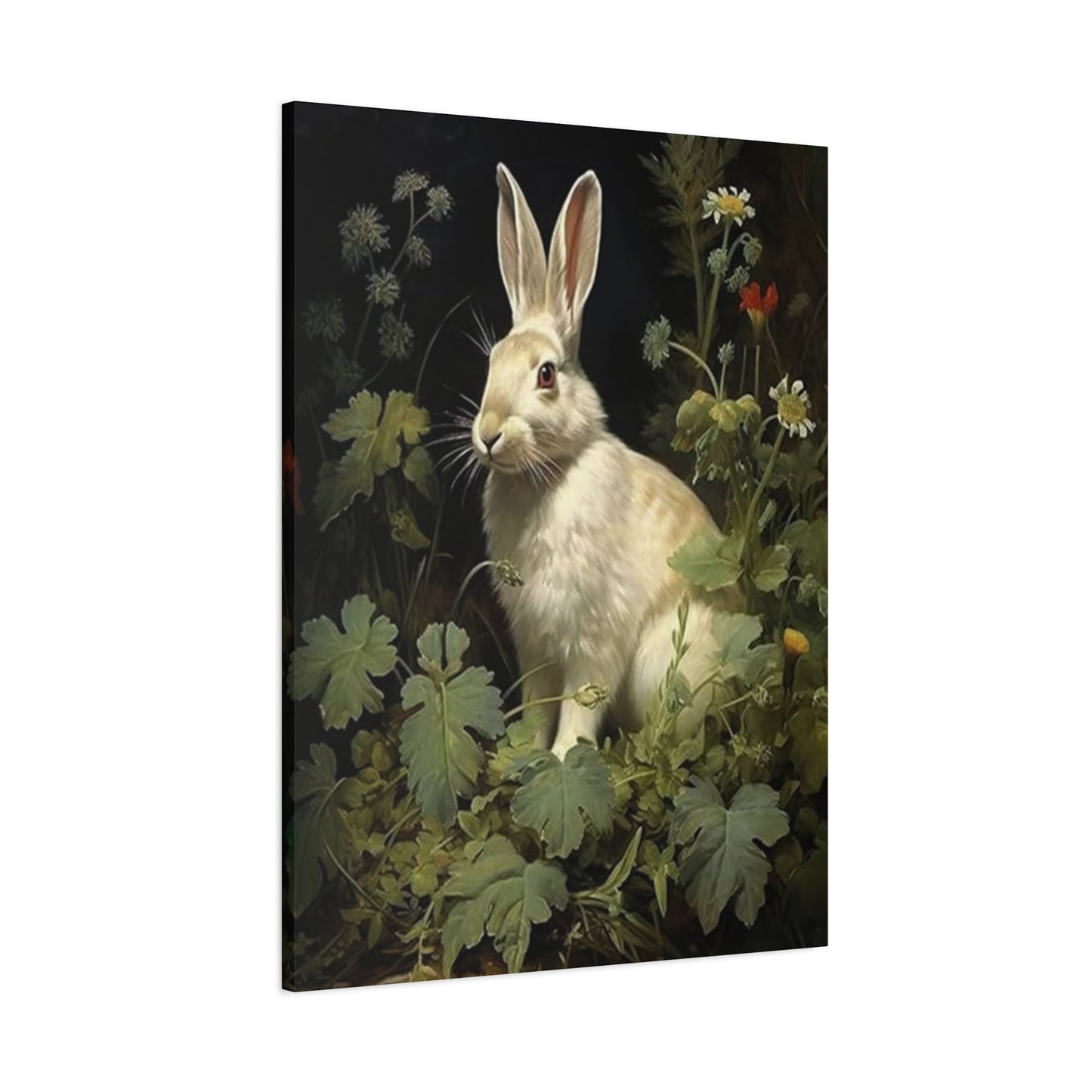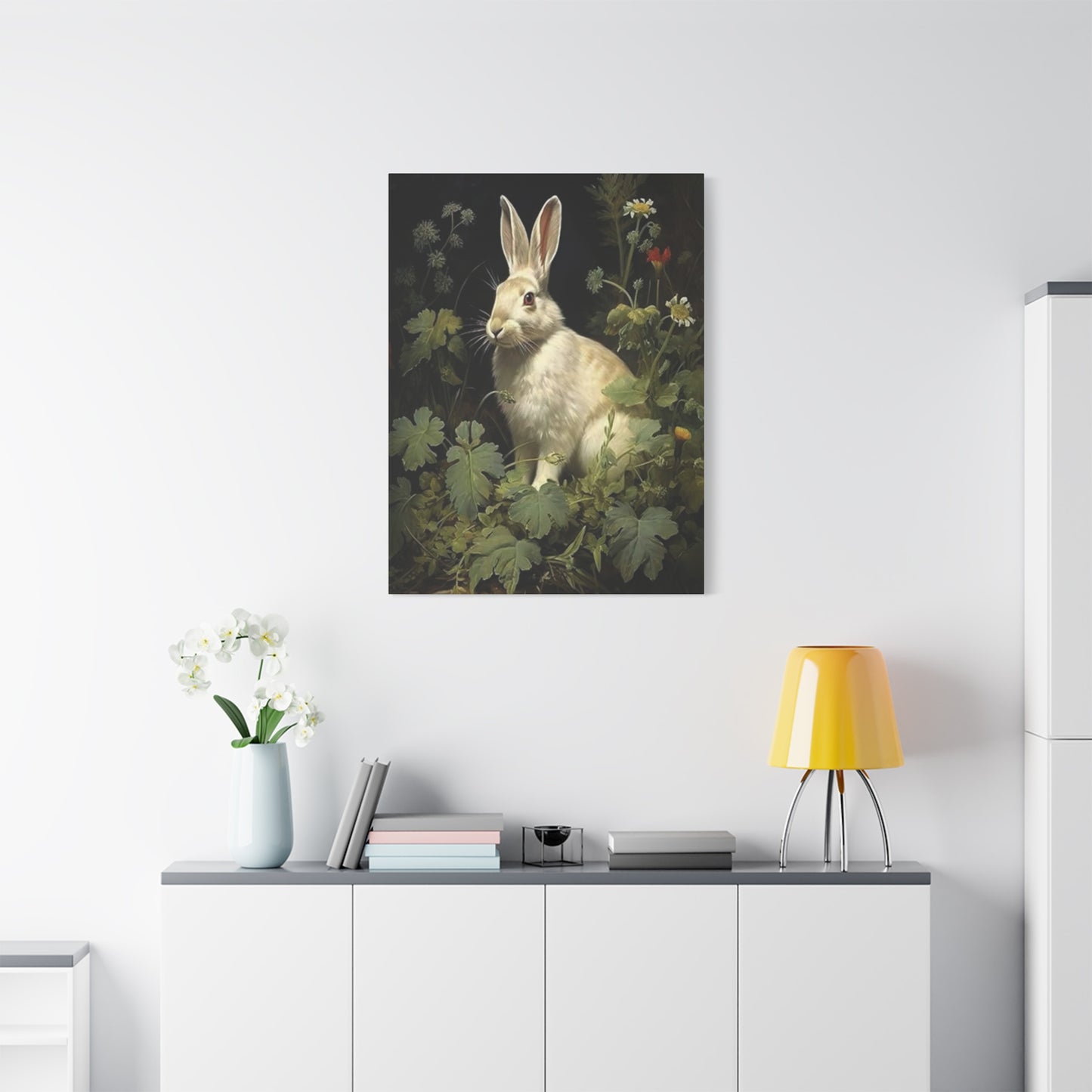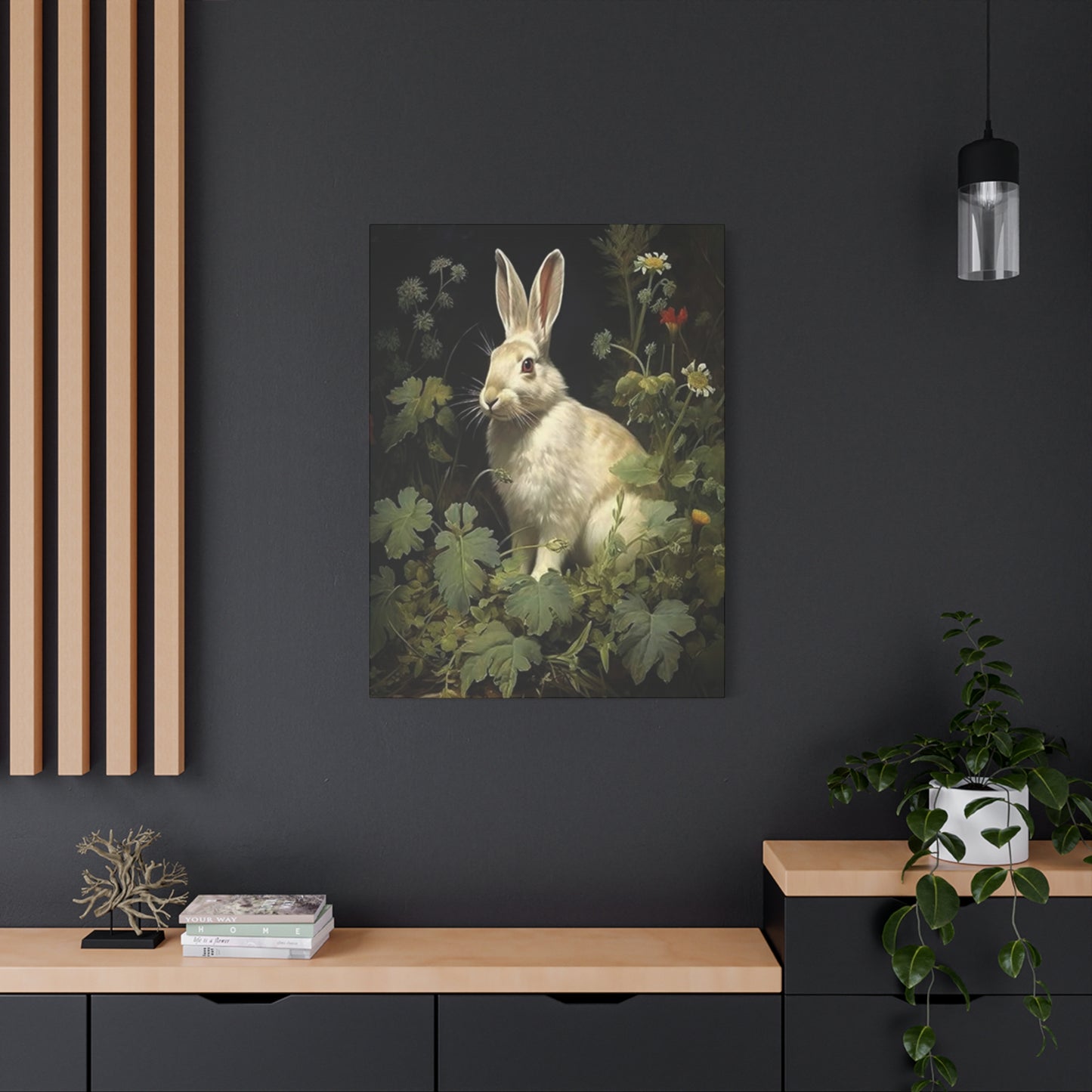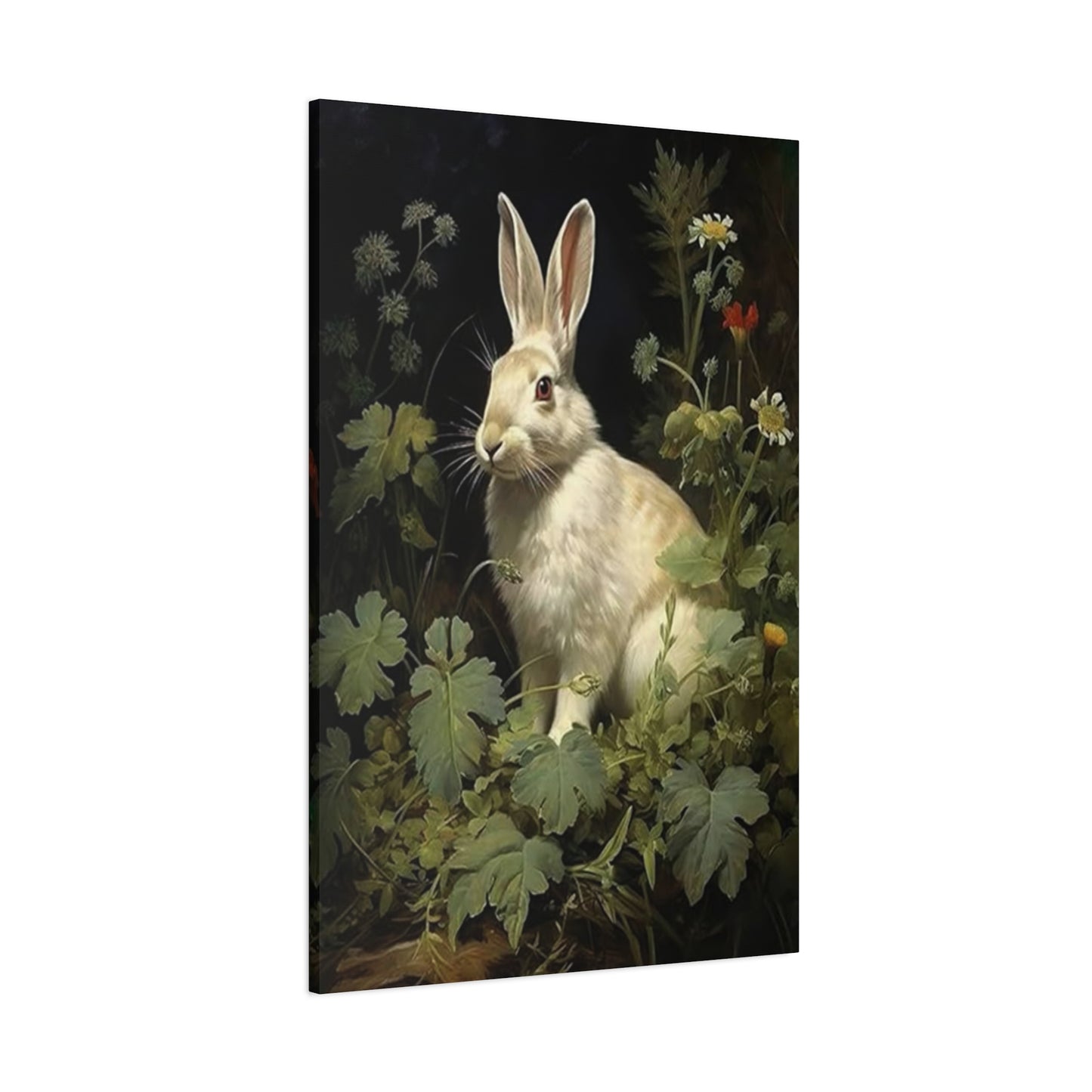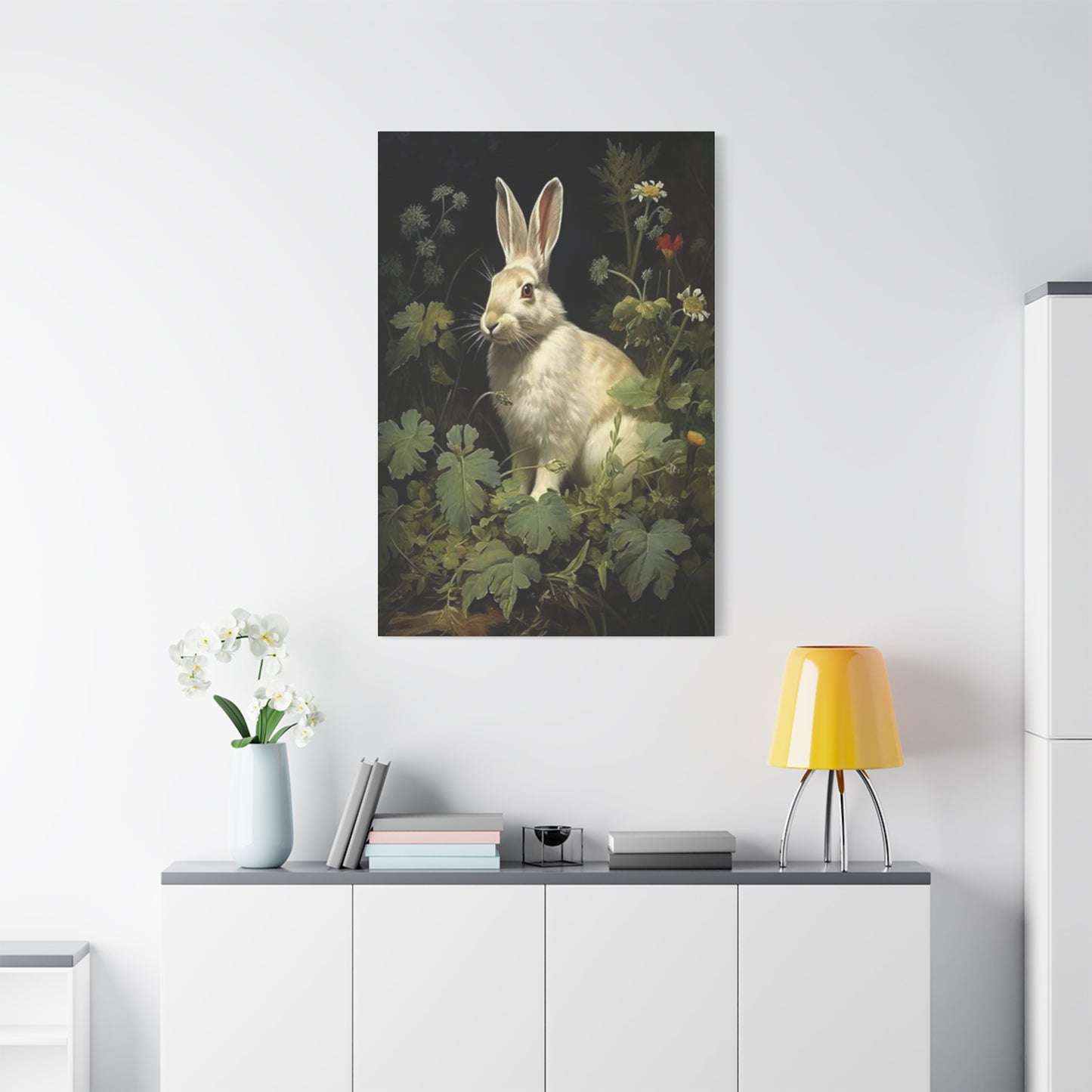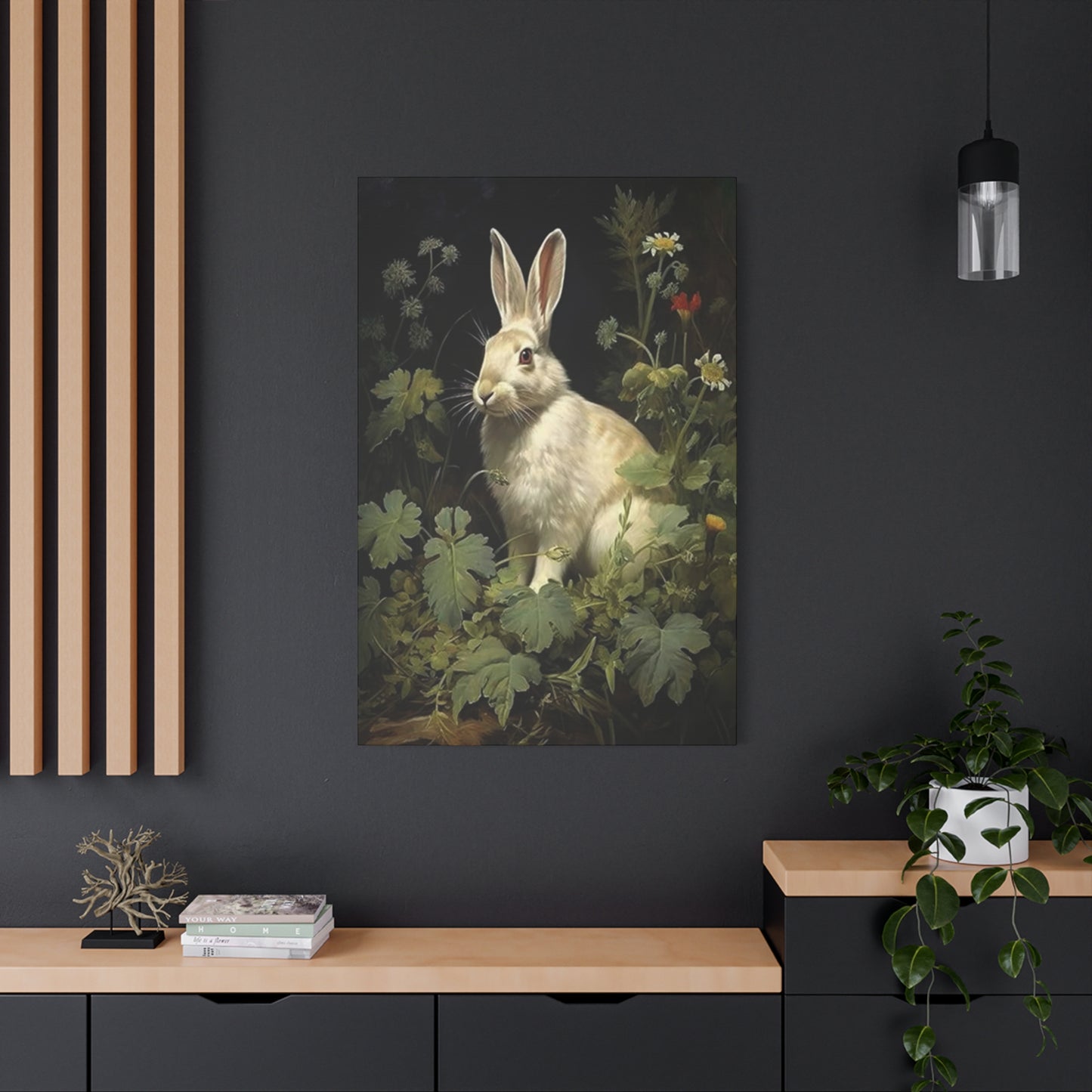Easter & Spring Décor Ideas Featuring The Small White Rabbit Wall Art
Decorating interior spaces with animal-themed artwork has become increasingly popular among homeowners, interior designers, and art enthusiasts alike. Among the countless options available, the small white rabbit wall art stands out as a particularly enchanting choice that brings warmth, innocence, and natural beauty into any room. This comprehensive exploration delves into the captivating world of bunny-themed canvas prints, examining their artistic merit, decorative potential, and the profound emotional connection they create within living spaces.
The appeal of rabbit-themed artwork transcends simple aesthetic preference. These gentle creatures have captured human imagination throughout history, appearing in folklore, literature, and artistic traditions across diverse cultures. When rendered in visual art form, especially as wall decor, rabbits evoke feelings of tranquility, gentleness, and connection to the natural world. The small white rabbit, in particular, carries symbolic weight representing purity, new beginnings, and innocence, making it an ideal subject for artistic interpretation and home decoration.
Contemporary interior design increasingly emphasizes creating spaces that feel personal, comforting, and emotionally resonant. In this context, the small white rabbit wall art serves multiple purposes simultaneously. It functions as a visual focal point, a conversation starter, and a source of daily joy for those who encounter it. Whether displayed in a child's nursery, a cozy living room, or a professional workspace, rabbit-themed canvas prints possess a universal appeal that transcends age boundaries and stylistic preferences.
The versatility of white rabbit artwork allows it to complement various design aesthetics, from rustic farmhouse charm to sleek modern minimalism. The neutral color palette associated with white rabbits makes them particularly adaptable to different color schemes and decorative approaches. Artists and designers have recognized this potential, creating an impressive array of styles, techniques, and interpretations that cater to diverse tastes and preferences.
Beyond their decorative function, these artworks carry deeper significance for many collectors and homeowners. Rabbits symbolize fertility, abundance, and quick thinking in various cultural traditions. The white rabbit specifically holds special meaning in literature and popular culture, most famously through its appearance in classic stories that have shaped collective imagination for generations. This layered symbolism adds depth to what might otherwise be considered simple animal portraiture.
The growing market for small white rabbit wall art reflects broader trends in contemporary home decor. Consumers increasingly seek artwork that feels authentic, meaningful, and personally significant rather than generic or mass-produced. Rabbit-themed pieces satisfy this desire by offering subject matter that feels both timeless and immediately relatable. The emotional response elicited by viewing a gentle bunny rendered in artistic form connects viewers to fundamental feelings of tenderness and protection.
Photography, painting, illustration, and digital art have all contributed to the rich variety of available white rabbit wall art. Each medium brings its own characteristics and aesthetic qualities to the subject matter. Photographic representations capture the authentic beauty and texture of actual rabbits, while illustrated and painted versions allow for creative interpretation, stylization, and imaginative contexts. This diversity ensures that individuals can find representations that align perfectly with their personal taste and decorating goals.
White Rabbit Canvas Prints
Canvas prints featuring white rabbits have revolutionized how people access and display quality artwork in their homes. This printing method transfers images onto canvas material stretched over wooden frames, creating pieces that mimic the appearance of original paintings at a fraction of the cost. The texture of canvas adds depth and dimension that cannot be achieved with standard paper prints, giving these reproductions an authentic artistic quality that enhances their decorative impact.
The production process for quality white rabbit canvas prints involves sophisticated printing technology that ensures color accuracy, detail preservation, and longevity. Modern giclée printing techniques use archival-quality inks that resist fading when properly displayed, maintaining the vibrancy and clarity of the original artwork for years or even decades. This technological advancement has democratized art ownership, making beautiful depictions of white rabbits accessible to a broader audience than ever before.
Various artistic styles characterize the available white rabbit canvas prints. Realistic portrayals capture every whisker, fur texture, and subtle eye expression with photographic precision. These pieces appeal to nature lovers and those who appreciate technical skill in artistic execution. The lifelike quality creates an almost three-dimensional effect, with rabbits appearing ready to hop off the canvas into the viewer's space. Such realism requires tremendous artistic talent or high-quality photography as the source material.
Impressionistic interpretations take a different approach, using loose brushwork, vibrant colors, and emphasis on light and atmosphere rather than precise detail. These white rabbit canvas prints convey the essence and feeling of the subject rather than exact representation. The result often feels more emotional and dreamlike, perfect for spaces designed to promote relaxation and imagination. The softer edges and blended colors create visual interest without overwhelming the viewer.
Contemporary abstract approaches to white rabbit canvas prints push boundaries even further, reducing the subject to essential forms, shapes, and colors. These pieces appeal to modern sensibilities and work particularly well in minimalist or contemporary interior designs. The rabbit might be suggested through simplified silhouettes, geometric shapes, or color fields rather than detailed rendering. This artistic freedom allows for bold, striking compositions that function as powerful visual statements.
Size considerations play a crucial role in selecting white rabbit canvas prints. Large-scale pieces create dramatic focal points, commanding attention and defining the character of entire walls or rooms. These statement artworks work beautifully above sofas, beds, or in spacious entryways where their impact can be fully appreciated. The grandeur of a substantial canvas print elevates the perceived value and importance of the artwork within the space.
Medium-sized white rabbit canvas prints offer versatility, fitting comfortably in various locations without overwhelming their surroundings. These pieces work well in dining rooms, home offices, hallways, and bedrooms where they contribute to the overall ambiance without dominating the visual field. The moderate scale allows viewers to appreciate details while maintaining appropriate proportion to surrounding furniture and architectural elements.
Cute Bunny Wall Decor
The category of cute bunny wall decor encompasses a delightful array of decorative items designed to bring charm, whimsy, and warmth to interior spaces. This broader classification includes not only traditional framed artwork and canvas prints but also three-dimensional elements, mixed media pieces, and innovative decorative objects that celebrate the endearing qualities of bunnies. The emphasis on cuteness as a defining characteristic influences artistic choices, resulting in imagery and objects that emphasize the most appealing aspects of rabbit appearance and behavior.
Aesthetic cuteness in bunny wall decor often manifests through specific artistic techniques and choices. Oversized eyes create expressions of innocence and vulnerability that trigger nurturing responses in viewers. Soft, rounded forms emphasize the fluffy, huggable qualities of rabbits. Pastel color palettes reinforce gentleness and sweetness. These deliberate design decisions tap into psychological responses that make cute imagery particularly effective in creating emotional connections with viewers.
Illustrated bunny wall decor frequently features anthropomorphic elements where rabbits display human characteristics or engage in human activities. These charming depictions might show bunnies wearing clothing, reading books, having tea parties, or engaging in other endearing scenarios. The combination of animal innocence with human behaviors creates narrative interest and imaginative appeal, particularly valued in children's spaces but equally enjoyed by adult admirers of whimsical art.
Three-dimensional bunny wall decor adds physical depth and tactile interest to walls. Sculptural pieces crafted from wood, metal, ceramic, or resin create shadows and dimensional presence that flat artwork cannot achieve. These objects might include bunny silhouettes, relief sculptures, or fully rounded forms mounted on backing plates. The dimensional quality creates dynamic visual interest as changing light conditions throughout the day alter the appearance and impact of the piece.
Mixed media approaches to cute bunny wall decor combine multiple materials and techniques within single pieces. Fabric elements might be incorporated alongside painted surfaces, creating textural variety. Three-dimensional bunny forms might emerge from painted backgrounds, bridging the gap between traditional artwork and sculpture. These innovative combinations push creative boundaries and result in unique pieces that stand out from conventional options.
Typography-based bunny wall decor integrates adorable rabbit imagery with meaningful words, phrases, or quotes. Nursery pieces might combine bunny illustrations with baby names, birth statistics, or encouraging messages. Inspirational quotes about kindness, gentleness, or nature appreciation might be paired with bunny imagery to reinforce the message. The combination of visual and verbal elements creates layered meaning and enhanced decorative impact.
Seasonal variations of cute bunny wall decor allow for festive decorating throughout the year. Spring naturally emphasizes bunnies surrounded by flowers, eggs, and symbols of renewal. Holiday-specific pieces might show bunnies in seasonal contexts relevant to various celebrations. This seasonal approach enables homeowners to refresh their decor regularly, maintaining visual interest and celebrating changing seasons through thoughtfully selected artwork.
Handcrafted cute bunny wall decor offers unique, one-of-a-kind quality that mass-produced items cannot match. Artisans create pieces using traditional techniques including needlework, woodcarving, pottery, and painting. Each handmade item carries the distinctive marks of its creator, introducing subtle variations and personal touches that enhance its character and value. Collectors and decorators often appreciate the craftsmanship and authenticity of handmade pieces.
Small Rabbit Art Prints
Small rabbit art prints represent an accessible entry point into collecting and displaying rabbit-themed artwork. These modestly sized reproductions of original artworks, illustrations, or photographs offer numerous advantages including affordability, versatility in placement, and ease of creating gallery wall arrangements. The term encompasses prints measuring typically from four by six inches up to approximately twelve by sixteen inches, though exact definitions vary among sellers and collectors.
The production methods for small rabbit art prints significantly impact their quality and longevity. Traditional offset lithography produces excellent color reproduction and detail at reasonable costs for larger print runs. Giclée printing using archival pigment inks delivers superior quality for smaller editions or individual prints, with exceptional color accuracy and fade resistance. Understanding these production differences helps buyers make informed choices based on their priorities regarding quality, price, and expected longevity.
Paper selection dramatically influences the appearance and durability of small rabbit art prints. Heavyweight fine art papers with acid-free composition resist yellowing and deterioration over decades. Smooth papers showcase fine details with precision, while textured papers add dimensional interest and artistic character. Glossy finishes enhance color vibrancy, while matte surfaces reduce glare and provide subtle sophistication. Each option creates different aesthetic effects suitable for particular decorating contexts.
The artistic styles available in small rabbit art prints span the entire spectrum of visual expression. Photorealistic prints capture rabbits with exceptional detail and accuracy, appealing to nature enthusiasts and those who appreciate technical skill. Watercolor-style prints offer soft, flowing qualities with delicate color transitions that create dreamy, ethereal effects. Bold graphic designs with simplified forms and limited color palettes suit contemporary tastes and modern interiors.
Vintage-inspired small rabbit art prints tap into nostalgia and historical aesthetic sensibilities. These might reproduce or reinterpret illustrations from antique children's books, scientific drawings from natural history collections, or folk art traditions. The aged appearance, whether authentic or artificially created, adds character and suggests historical continuity. These pieces appeal to collectors of vintage aesthetics and those seeking to create rooms with timeless, classic atmospheres.
Botanical elements frequently accompany rabbits in small art prints, creating nature-focused compositions that celebrate the interconnection of flora and fauna. Rabbits might be depicted among wildflowers, garden plants, or forest vegetation. These combinations appeal to gardeners, nature lovers, and those seeking artwork that brings natural beauty indoors. The botanical details provide additional visual interest and opportunities for color introduction.
Black and white small rabbit art prints offer sophisticated minimalism that works particularly well in contemporary and traditional settings alike. The absence of color focuses attention on form, composition, texture, and contrast. These prints complement any color scheme without competing, making them versatile choices for spaces where color palettes remain undefined or frequently change. The timeless quality of monochromatic imagery ensures these prints remain visually relevant regardless of passing color trends.
Limited edition small rabbit art prints carry special value for collectors. Artists and publishers number these prints, guaranteeing their relative scarcity and potential for appreciation. The exclusivity appeals to serious collectors who value uniqueness and potential investment return. Certificates of authenticity typically accompany limited edition prints, documenting their legitimacy and edition information. This collectible dimension transforms decorative items into potentially appreciating assets.
The framing of small rabbit art prints dramatically affects their final appearance and impact. Simple frames focus attention on the artwork itself, while ornate frames become part of the overall artistic statement. Matting choices influence the visual presentation significantly, with mat color, width, and style all contributing to the final effect. Professional framing services help ensure optimal presentation, though DIY framing offers budget-conscious alternatives.
Gallery wall arrangements showcase small rabbit art prints particularly effectively. Multiple prints can be combined to create visual narratives, thematic collections, or aesthetically balanced compositions. The smaller size of individual prints allows for experimental arrangements without major commitment or expense. Grid patterns create orderly, structured presentations, while organic arrangements feel more casual and eclectic. Both approaches work beautifully depending on the desired atmosphere and decorating style.
Whimsical Bunny Canvas
Whimsical bunny canvas artwork embraces imagination, playfulness, and creative interpretation of rabbit subjects. This category deliberately moves beyond realistic representation into realms of fantasy, humor, and artistic experimentation. The term captures pieces where artistic vision and creative license take precedence over accurate portrayal, resulting in artwork that delights, surprises, and engages viewers through unexpected elements and imaginative scenarios.
The defining characteristics of whimsical bunny canvas include unexpected color choices that depart from natural rabbit coloring. Pink, purple, blue, or multicolored bunnies immediately signal artistic freedom and imaginative intent. These unconventional color palettes create visual impact and communicate that the artwork operates in imaginative rather than realistic territory. The bold color choices make these pieces particularly effective as focal points in rooms needing personality and visual interest.
Fantastical settings distinguish many whimsical bunny canvas pieces from more conventional rabbit artwork. Bunnies might inhabit magical forests with oversized mushrooms and glowing flowers, float among clouds or stars, or explore underwater realms. These impossible scenarios invite viewers into imaginative worlds where normal rules don't apply. The transportive quality of such imagery makes it particularly valued in spaces designed for dreaming, creativity, and play.
Anthropomorphic elements feature prominently in whimsical bunny canvas art. Rabbits wearing elaborate costumes, engaging in human activities, or displaying exaggerated expressions create narrative interest and humor. A bunny dressed as a sea captain, reading in a library, or having an elegant tea party introduces storytelling elements that engage viewers' imaginations and create emotional connections through identified scenarios and implied narratives.
Surrealist influences appear in some whimsical bunny canvas pieces, incorporating elements of dream logic, unexpected juxtapositions, and reality-bending compositions. A bunny might have butterfly wings, emerge from an oversized flower, or exist simultaneously in multiple contexts. These surrealist touches challenge viewers' perceptions and create memorable, conversation-starting artwork that rewards repeated viewing with new discovered details and interpretations.
Folk art traditions inform certain whimsical bunny canvas styles, drawing on cultural aesthetic conventions including specific color palettes, decorative patterns, and compositional approaches. Pennsylvania Dutch, Scandinavian, Mexican, and Eastern European folk traditions each bring distinctive visual vocabularies to bunny imagery. These culturally grounded approaches add richness and diversity to available whimsical bunny art, connecting contemporary work to historical artistic lineages.
Pattern and texture play enhanced roles in whimsical bunny canvas compared to realistic representations. Artists might cover bunnies with decorative patterns including florals, geometrics, or abstract designs rather than depicting natural fur texture. Backgrounds might feature ornate patterns, tessellations, or layered textures that create visual complexity. These decorative approaches prioritize aesthetic richness over natural appearance, resulting in highly ornamental, visually dense compositions.
The scale relationships in whimsical bunny canvas often deliberately defy natural proportions. Miniature bunnies might be shown with oversized flowers, or giant rabbits might loom over tiny landscapes. These distorted scale relationships create visual surprise and emphasize the imaginative nature of the work. The deliberate impossibility signals viewers to engage their imagination and suspend expectations of realism.
Mixed media techniques appear frequently in whimsical bunny canvas, combining painting with collage elements, dimensional additions, or metallic accents. These varied materials and techniques create tactile interest and visual complexity. Three-dimensional elements like fabric, buttons, or sculptural components blur boundaries between traditional painting and craft art, resulting in unique pieces that stand out through their innovative construction.
White Hare Wall Art
White hare wall art celebrates a specific animal species with distinct characteristics and rich symbolic heritage. While rabbits and hares are related, they represent different animals with unique physical features, behaviors, and cultural significance. Hare-specific artwork recognizes these differences, portraying animals with longer ears, larger bodies, more muscular builds, and different postures compared to their rabbit cousins. This distinction matters to wildlife enthusiasts, nature artists, and those drawn to the particular symbolism associated with hares.
The physical characteristics distinguishing hares from rabbits influence artistic representation significantly. Hares possess longer, more dramatic ears with black tips, creating striking visual elements. Their longer legs and more athletic body structure convey power and speed rather than the compact roundness associated with rabbits. These physical differences require artistic knowledge and observation skills to portray accurately, distinguishing quality hare artwork from generic lagomorph representations.
Cultural symbolism surrounding white hares adds depth to their artistic representation. Various traditions associate hares with the moon, fertility, transformation, and magic. Celtic mythology particularly emphasizes hare symbolism, with white hares appearing in numerous legends and folklore. These cultural associations infuse hare artwork with layered meanings beyond simple animal portraiture, appealing to those drawn to mythology, spirituality, and cultural heritage.
The lunar connection to hares appears in multiple cultural traditions, linking these creatures to cycles, femininity, and mystical wisdom. Artistic representations often incorporate moon imagery, nighttime settings, or celestial elements to emphasize this association. The resulting compositions create mysterious, evocative atmospheres that transcend straightforward wildlife art, entering realms of spiritual and symbolic expression.
Behavioral differences between hares and rabbits influence artistic depiction choices. Hares live above ground rather than in burrows, leading to artwork showing them in open landscapes rather than near dens or warrens. Their solitary nature contrasts with the social behavior of rabbits, resulting in compositions featuring individual animals rather than groups. These behavioral distinctions create different narrative and emotional tones in hare versus rabbit artwork.
The seasonal coat changes of certain hare species provide artistic interest and variety. Arctic hares and snowshoe hares develop white winter coats providing camouflage in snowy environments, then molt to brown summer coats. This transformation offers opportunities for artwork depicting seasonal changes and adaptation. The pure white winter coat creates particularly striking imagery against snowy or contrasting backgrounds.
Habitat settings in white hare wall art typically emphasize wild, open landscapes rather than gardens or domestic settings. Moorlands, mountain slopes, tundra, and winter forests provide appropriate contexts reflecting actual hare ecology. These wilder settings contribute to the overall impression of untamed nature and freedom rather than the cozier domesticity often associated with rabbit artwork.
The athletic grace of hares in motion provides compelling subject matter for dynamic artwork. Hares running at high speed, leaping dramatically, or boxing during courtship create energetic compositions full of movement and vitality. These action scenes require artistic skill to convey motion convincingly while maintaining anatomical accuracy. The resulting pieces capture the wild energy and athletic prowess that characterize these remarkable animals.
The white hare specifically carries additional symbolic weight compared to brown hares. White animals often hold special significance in various traditions, representing purity, otherworldliness, or spiritual messages. The relative rarity of white hares in nature adds to their perceived specialness and mystique. Artwork featuring white hares taps into these associations, creating pieces that resonate on both aesthetic and symbolic levels.
Fine art approaches to white hare wall art demonstrate the subject's suitability for serious artistic treatment. Master painters and skilled illustrators have created significant works featuring hares throughout art history. Contemporary artists continue this tradition, producing museum-quality pieces that transcend decorative function to achieve genuine artistic merit. These fine art hare works become valuable acquisitions for serious collectors.
Wildlife conservation themes connect naturally with white hare wall art. As with many wild species, hares face habitat loss and environmental pressures. Artwork celebrating these animals can raise awareness and appreciation, potentially motivating conservation support. Some artists donate portions of proceeds to wildlife conservation organizations, allowing collectors to contribute to preservation efforts through their purchases.
The photographic capture of white hares presents significant challenges due to their wariness and excellent camouflage. Quality wildlife photography featuring white hares represents considerable skill, patience, and field time. These photographs provide both stunning artwork in their own right and valuable reference material for painters and illustrators. The authenticity of field-captured images adds documentary value to aesthetic appeal.
Scientific illustration traditions influence certain white hare wall art, particularly pieces emphasizing accuracy and educational value. Natural history illustration prioritizes detailed, accurate representation showing key identifying features, proportions, and characteristics. These scientifically grounded artworks appeal to naturalists, educators, and those who appreciate the intersection of art and science. The precision required demonstrates impressive artistic skill.
Charming Rabbit Wall Decor
Charming rabbit wall decor encompasses a delightful category of decorative items designed to bring warmth, personality, and inviting character to interior spaces. The emphasis on charm as a defining quality suggests pieces that captivate through endearing qualities, pleasing aesthetics, and emotional appeal rather than dramatic impact or avant-garde innovation. This category includes various formats, materials, and styles united by their ability to create welcoming, attractive environments through rabbit-themed imagery and objects.
The concept of charm in decorative arts involves qualities including gracefulness, aesthetic appeal, and the ability to create positive emotional responses. Charming rabbit decor achieves these effects through careful artistic choices including soft color palettes, gentle compositions, and imagery emphasizing appealing rabbit characteristics. The cumulative effect creates spaces that feel inviting, comfortable, and personally meaningful to inhabitants and visitors alike.
Material diversity characterizes charming rabbit wall decor, extending beyond traditional framed artwork to include dimensional pieces, mixed media objects, and innovative decorative items. Wood carvings, metal sculptures, ceramic tiles, fabric hangings, and composite constructions all contribute to the category. This material variety allows decorators to introduce textural interest and dimensional complexity beyond what flat artwork alone can provide.
Traditional artistic techniques inform much charming rabbit wall decor, connecting contemporary pieces to historical craft traditions. Watercolor paintings with their soft, luminous qualities create gentle, appealing imagery. Pencil sketches emphasizing delicate linework and subtle shading demonstrate classical draftsmanship. Oil paintings with rich colors and sophisticated technique elevate rabbit subjects into fine art territory. These traditional approaches ensure timeless appeal that transcends temporary trends.
Contemporary interpretations of charming rabbit wall decor maintain traditional appeal while incorporating modern sensibilities. Clean lines, simplified forms, and restrained color palettes create pieces that honor tradition while feeling current and relevant. This balance between classic charm and contemporary aesthetics results in versatile pieces suitable for both traditional and modern interiors, maximizing market appeal and decorative flexibility.
The storytelling aspect of charming rabbit wall decor engages viewers through implied narratives and emotional scenarios. Compositions might suggest peaceful moments, gentle interactions, or quiet contemplation. These narrative elements transform static images into windows onto moments and experiences, inviting viewers to project their own stories and emotional connections onto the artwork. The engagement deepens appreciation and creates more meaningful relationships with decorative items.
Color psychology plays crucial roles in charming rabbit wall decor effectiveness. Soft pastels including pale pink, lavender, mint green, and buttery yellow create soothing, gentle atmospheres. Warm earth tones including taupe, cream, soft brown, and sage green connect to natural settings while maintaining sophisticated restraint. These thoughtful color choices ensure pieces enhance rather than overwhelm their environments, contributing to overall room harmony.
The placement versatility of charming rabbit wall decor allows these pieces to enhance various spaces throughout homes. Living rooms benefit from larger statement pieces that anchor seating areas and establish room character. Bedrooms become more restful with gentle rabbit imagery promoting peaceful, secure feelings. Hallways and entryways welcome inhabitants and guests with friendly, inviting animal imagery. Even unexpected locations like bathrooms and closets can be enhanced with appropriately scaled charming rabbit decor.
Grouping strategies for charming rabbit wall decor enable creation of impactful displays from multiple smaller pieces. Gallery wall arrangements combining various rabbit-themed items create visual interest through repetition and variation. Thematic consistency holds collections together while individual piece differences prevent monotony. The cumulative effect of well-arranged groupings exceeds what individual pieces could achieve alone, demonstrating how thoughtful curation multiplies decorative impact.
The gift suitability of charming rabbit wall decor makes it appropriate for numerous occasions and recipients. New homeowners appreciate decorative pieces that help transform houses into personal homes. Baby gifts including nursery-appropriate rabbit decor remain treasured for years. Birthday, holiday, and celebration gifts of charming rabbit items delight recipients who appreciate thoughtful, aesthetic presents with lasting value. The universal appeal of well-executed rabbit decor makes these gifts safe choices likely to be genuinely appreciated.
Quality indicators in charming rabbit wall decor help distinguish superior pieces from inferior alternatives. Construction quality including secure mountings, stable materials, and quality finish work ensures longevity and safety. Artistic execution demonstrating skill, thoughtfulness, and careful composition separates mediocre work from genuinely charming pieces. Material quality including fade-resistant inks, archival papers, and durable constructions provides better long-term value despite potentially higher initial costs.
Vintage White Rabbit Art
Vintage white rabbit art encompasses both genuinely antique pieces from earlier historical periods and contemporary creations designed to evoke nostalgic, historical aesthetics. This category appeals to collectors of vintage items, enthusiasts of particular historical periods, and decorators seeking to create rooms with timeless, classic character. The aged appearance, whether authentic or artfully created, adds layers of meaning and cultural connection beyond what contemporary artwork alone can provide.
Authentic vintage white rabbit art includes original pieces created during earlier time periods, now valued for their age, historical significance, and artistic merit. Victorian-era illustrations from children's books represent significant examples, showcasing the detailed, sentimental style characteristic of that period. Early twentieth-century advertising art featuring rabbits provides glimpses into commercial art history and popular culture. Natural history illustrations from scientific publications demonstrate the intersection of art and science in earlier periods.
The aged appearance characteristic of vintage white rabbit art develops naturally over decades through paper discoloration, ink fading, and subtle deterioration. These signs of age often enhance rather than diminish appeal, providing authentic historical character and visual interest. The patina of age connects viewers to the past, creating tangible links to earlier times. Collectors value these authentic aging characteristics as proof of genuineness and historical legitimacy.
Reproduction vintage white rabbit art recreates historical aesthetics through deliberate artistic choices and aging techniques. Modern artists research historical styles, studying composition approaches, color palettes, and artistic conventions of specific periods. The resulting works capture historical flavor while offering the advantage of contemporary production quality and availability. These reproductions make vintage aesthetics accessible without the cost and scarcity of authentic antiques.
Victorian sentimentality heavily influenced white rabbit art from that era, with imagery emphasizing innocence, sweetness, and moral lessons. Rabbits appeared in children's literature illustrations, teaching materials, and decorative prints intended for nursery and family display. The detailed, realistic rendering combined with idealized, sentimental scenarios created distinctive aesthetic now strongly associated with Victorian culture. Contemporary vintage-style pieces often reference these Victorian conventions.
Early twentieth-century modernist movements brought different approaches to rabbit imagery, incorporating simplified forms, bold graphics, and reduced color palettes. Art Nouveau styling added flowing lines and decorative elements. Art Deco introduced geometric patterns and sophisticated styling. These period-specific aesthetics influence contemporary vintage-style rabbit art, with creators drawing inspiration from particular historical movements.
The illustration techniques of earlier periods including pen and ink drawing, watercolor painting, and lithographic printing created distinctive visual characteristics now strongly associated with vintage aesthetics. The limited color palettes of early printing processes, the visible halftone patterns of vintage reproduction, and the subtle imperfections of hand-rendered artwork all contribute to vintage charm. Contemporary artists recreate these technical characteristics to achieve authentic-looking results.
Collecting authentic vintage white rabbit art requires knowledge about dating techniques, authentication methods, and market values. Understanding paper types, printing techniques, and artistic styles helps collectors evaluate potential acquisitions. Consulting reference materials, seeking expert opinions, and developing trained observation skills all contribute to collecting success. The specialized knowledge required creates barriers but also adds intellectual engagement to the collecting pursuit.
The investment potential of authentic vintage white rabbit art varies dramatically based on artist recognition, rarity, condition, and market demand. Works by well-known illustrators or from particularly significant publications command premium prices and show stronger appreciation potential. Rare pieces in excellent condition represent the most valuable acquisitions. However, even modest vintage pieces can appreciate steadily while providing aesthetic enjoyment, making collecting both financially prudent and personally satisfying.
Minimalist Bunny Canvas Prints
Minimalist bunny canvas prints represent the intersection of animal imagery with contemporary minimalist aesthetics, creating pieces that embody simplicity, restraint, and refined visual impact. This category embraces design principles including reduction to essential elements, strategic use of negative space, limited color palettes, and clean, uncluttered compositions. The resulting artwork achieves maximum impact through minimum means, appealing to contemporary tastes and complementing modern interior design aesthetics.
The philosophical foundation of minimalism emphasizes that less is more, prioritizing quality over quantity and meaning over decoration. When applied to bunny imagery, these principles result in simplified forms, elimination of unnecessary details, and focus on core characteristics that define rabbit subjects. A few carefully placed lines might suggest an entire bunny, or a simple silhouette might convey essence without elaboration. This reductive approach requires artistic discipline and sophisticated understanding of form.
Monochromatic color schemes dominate minimalist bunny canvas prints, with black and white combinations representing the most extreme reduction. The stark contrast creates graphic impact while eliminating color as a variable. Subtle variations within limited ranges including all-white compositions with tonal differences or black line drawings on white grounds demonstrate how restriction enhances rather than limits artistic expression. These restrained palettes ensure compatibility with virtually any interior color scheme.
Negative space functions as a crucial design element in minimalist bunny canvas prints, with empty areas balancing and defining the positive forms. The relationship between figure and ground receives careful consideration, with white space treated as actively contributing to composition rather than simply as background. This sophisticated use of emptiness creates breathing room and focuses attention on the essential bunny form, allowing viewers to complete the image mentally.
Line quality in minimalist bunny canvas prints achieves remarkable expressiveness through economy of means. A single flowing line might describe an entire rabbit contour, with subtle variations in thickness suggesting dimension and form. The precision and confidence required to execute minimal linework reveals artistic skill clearly, as every mark receives scrutiny with no extraneous elements to distract from imperfections. The purity of line-based compositions appeals to those appreciating technical mastery.
Geometric abstraction appears in some minimalist bunny canvas prints, reducing rabbits to essential shapes including circles, ovals, triangles, and simple curves. These geometric reductions emphasize underlying forms while eliminating surface details. The result feels contemporary and design-forward, bridging representational art and pure abstraction. Geometric bunny prints work particularly well in modern interiors where they harmonize with furniture and architectural elements sharing similar aesthetic principles.
The scale relationship between bunny subject and canvas size in minimalist prints often emphasizes emptiness, with small bunny forms floating in expansive white or neutral space. This compositional choice creates contemplative, zen-like atmospheres where viewers can rest their eyes and minds. The generous negative space prevents visual clutter and promotes peaceful, meditative responses. These pieces function almost as visual breathing exercises, offering respite from sensory overload.
Typography integration in some minimalist bunny canvas prints combines simple bunny imagery with spare text elements. A single word, brief phrase, or minimal textual element might accompany a simplified bunny form. The text and image work together to create unified designs where neither element dominates. These combined compositions appeal to those appreciating clean graphic design and integrated visual-verbal communication.
The Scandinavian design influence on minimalist bunny canvas prints brings specific aesthetic qualities including functionality, natural materials, and subdued color palettes. Nordic minimalism tends toward warmer minimalism compared to stark industrial minimalism, incorporating natural textures and organic forms while maintaining restraint and simplicity. Bunny prints influenced by Scandinavian aesthetics feel approachable and warm despite their simplicity.
Japanese aesthetic principles including wabi-sabi influence certain minimalist bunny canvas prints, embracing imperfection, transience, and the beauty of aging. Rough brushwork, asymmetrical compositions, and evidence of the artistic process create pieces that feel human and authentic despite their minimalist reduction. This approach prevents minimalism from feeling cold or overly controlled, introducing warmth through subtle imperfections and handmade qualities.
The versatility of minimalist bunny canvas prints makes them appropriate for extremely diverse interior contexts. Modern minimalist spaces naturally welcome these pieces as stylistic matches. Traditional interiors benefit from minimalist art as counterpoint to ornate furnishings, preventing overwhelm through restraint. Transitional spaces bridging multiple styles accommodate minimalist prints easily due to their neutrality and adaptability. This cross-stylistic compatibility maximizes decorative utility.
Size considerations in minimalist bunny canvas prints influence their impact significantly. Large-scale minimal compositions create powerful statements through the dramatic contrast between simple imagery and substantial physical presence. The unexpected scale of minimal elements creates memorable visual experiences. Conversely, small minimal prints can be grouped effectively, with multiple simple pieces combining into more complex overall compositions while each individual work maintains minimalist purity.
Storybook Rabbit Wall Art
There’s something inherently magical about storybook-inspired décor — it evokes nostalgia, imagination, and a sense of wonder. Among the many enchanting designs that have captured hearts and homes, storybook rabbit wall art stands out as a timeless favorite. Blending childhood innocence with artistic elegance, this style transforms any wall into a visual tale of curiosity, adventure, and charm.
The appeal of storybook rabbit wall art lies in its deep connection to classic children’s literature and folklore. From Beatrix Potter’s Peter Rabbit to Lewis Carroll’s Alice’s Adventures in Wonderland, rabbits have long symbolized curiosity, courage, and playfulness. Artists today reinterpret these beloved motifs through watercolor illustrations, sketch-style prints, and digital artworks, creating pieces that resonate with both adults and children. Each piece tells a silent story — a rabbit peeking from behind a tree, hopping through a meadow, or reading under a moonlit sky — inviting viewers to imagine the world beyond the frame.
In interior design, this form of wall art fits beautifully into a wide range of aesthetics. For nurseries and children’s rooms, storybook rabbit art offers a gentle, comforting atmosphere. Soft pastel tones, whimsical brushstrokes, and playful expressions help create an environment that nurtures creativity and calm. Framed prints or canvas versions can be arranged as a gallery wall, mixing different scenes to create a mini fairytale narrative across the space.
But it’s not just for kids’ rooms. Adults appreciate storybook rabbit wall art for its nostalgic yet sophisticated quality. In a modern living room, a minimalist black-and-white sketch of a rabbit reading a book can introduce a subtle touch of whimsy without overwhelming the decor. In a cottage-style or Scandinavian-inspired home, watercolor rabbit art adds warmth and personality, balancing rustic textures with soft storytelling visuals. It also complements seasonal décor — especially around spring or Easter — when themes of renewal and nature are celebrated.
The versatility of these artworks extends to the mediums and materials used. Canvas prints bring depth and texture, while framed paper illustrations maintain a delicate, handcrafted charm. Some contemporary artists even blend mixed media — pairing ink outlines with digital pastel layers — giving a fresh, modern edge to the classic storybook look.
Beyond aesthetics, storybook rabbit wall art carries emotional resonance. It reminds us of simpler times — bedtime tales, picture books, and the wide-eyed curiosity of youth. Hanging such a piece in your home doesn’t just decorate the wall; it adds a touch of storytelling magic that sparks imagination and conversation.
Whether you’re curating a nursery, designing a cozy reading nook, or seeking a nostalgic accent for your living space, storybook rabbit wall art offers the perfect blend of whimsy and warmth. It’s not merely art — it’s a narrative in visual form, a timeless reminder that imagination never truly fades.
Conclusion
As the seasons shift and the chill of winter gives way to the warmth of spring, Easter and spring décor provide the perfect opportunity to breathe new life into your home. Among the many charming motifs that define this joyful season, The Small White Rabbit wall art stands out as a timeless emblem of renewal, innocence, and natural beauty. This gentle yet captivating piece captures the very essence of springtime—hope, rebirth, and simplicity—making it a beautiful way to transform any interior space into a haven of serenity and cheer.
Incorporating rabbit-themed artwork into your décor isn’t just about celebrating Easter; it’s about embracing the season’s core values of growth and transformation. The image of a small white rabbit—delicate, pure, and full of quiet energy—serves as a powerful symbol of new beginnings. Whether showcased in soft watercolor tones, minimalist sketches, or whimsical illustrations, this art style instantly adds warmth and depth to your living environment. It bridges the gap between festive charm and year-round elegance, blending seamlessly with both rustic farmhouse aesthetics and modern minimalist interiors.
During Easter, The Small White Rabbit wall art can be complemented by seasonal elements such as fresh flowers, woven baskets, and pastel-colored textiles. Displaying it in an entryway sets a welcoming tone, while placing it above a mantel or sideboard allows it to anchor the entire seasonal décor theme. Its light and airy palette pairs beautifully with spring colors—soft pinks, muted greens, buttery yellows, and creamy whites—creating a visual harmony that evokes peace and comfort.
Beyond its seasonal relevance, this artwork carries a universal emotional resonance. The white rabbit symbolizes gentleness, curiosity, and innocence—themes that remind us to slow down and appreciate life’s simple pleasures. When used as a year-round piece, it offers a constant sense of calm and grounding. In a world that often feels fast-paced and overwhelming, the quiet grace of such artwork provides a much-needed pause, transforming your walls into a reflection of mindfulness and hope.
Ultimately, decorating with The Small White Rabbit wall art during Easter and springtime is more than an aesthetic choice—it’s a way to celebrate renewal, joy, and the beauty of simplicity. It connects the natural world with the intimacy of home, reminding us of the gentle rhythms of the seasons and the timeless appeal of nature-inspired art. As sunlight begins to pour through open windows and flowers bloom outside, this charming piece will serve as a poetic reflection of the season’s warmth, symbolizing purity, peace, and the ever-renewing spirit of spring.
Let your space tell the story of new beginnings, and allow the Small White Rabbit to be the heart of that transformation—softly whispering the promise of hope, harmony, and the endless beauty of life’s gentle cycles.

















